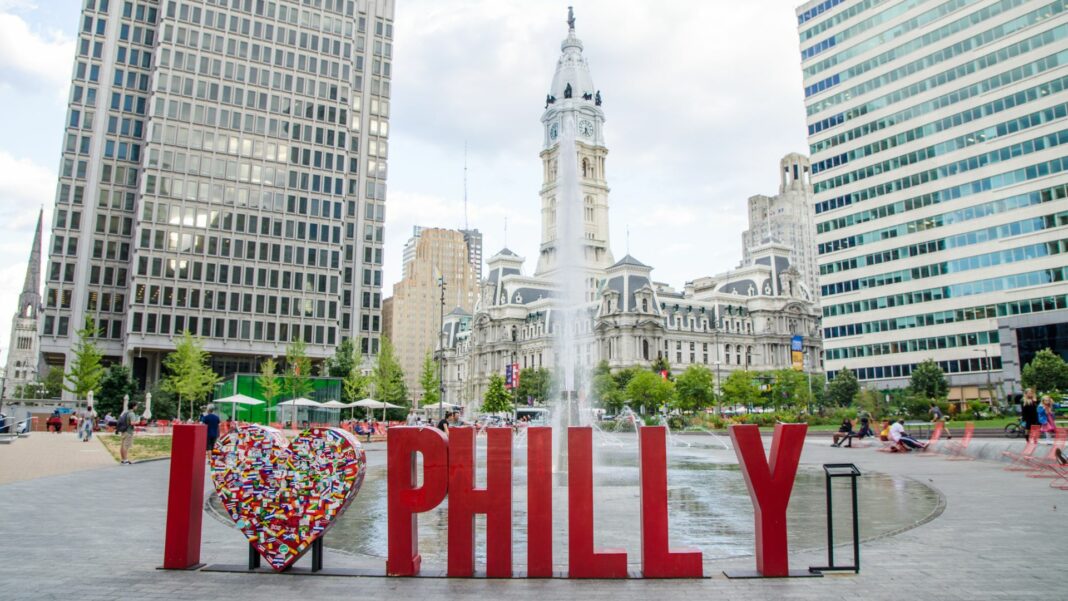Yes, Philadelphia is affordable, especially when compared to other major cities on the East Coast.
Whether you’re a recent grad, a young professional weighing Center City against the suburbs, or someone relocating from a pricier market, understanding Philadelphia’s rental landscape can save you thousands of dollars a year.
Let’s break down what it actually costs to live here (excluding Eagles and Phillies gear), where your money goes furthest, and how to make this city work for your budget.
- Median rent: $1,650 (all bedroom sizes included)
- Best move-in month: February (2% below yearly average)
- Most affordable neighborhood: Dunlap ($1,100/month)
- Income needed for median rent: $66,000/year
What we’ll cover in this Philadelphia rent guide:
- How Philadelphia Compares to National Averages
- Salary Requirements for Philadelphia Renters
- Most Affordable Philadelphia Neighborhoods
- Most Expensive Philadelphia Neighborhoods
- Best Time to Search for Apartments
- Car vs. Car-Free Living Costs
- FAQ: Philadelphia Rent Questions
How does Philadelphia rent compare to the national average?
Philadelphia’s rental market sits just below the national average and has been remarkably stable while other cities experience wild price swings.
According to Zumper’s October 2025 Philadelphia rental data, a one-bedroom apartment averages $1,500 per month—1.12% cheaper than the U.S. median of $1,517. Two-bedrooms perform even better at $1,790, running 5.49% below the national median of $1,894.
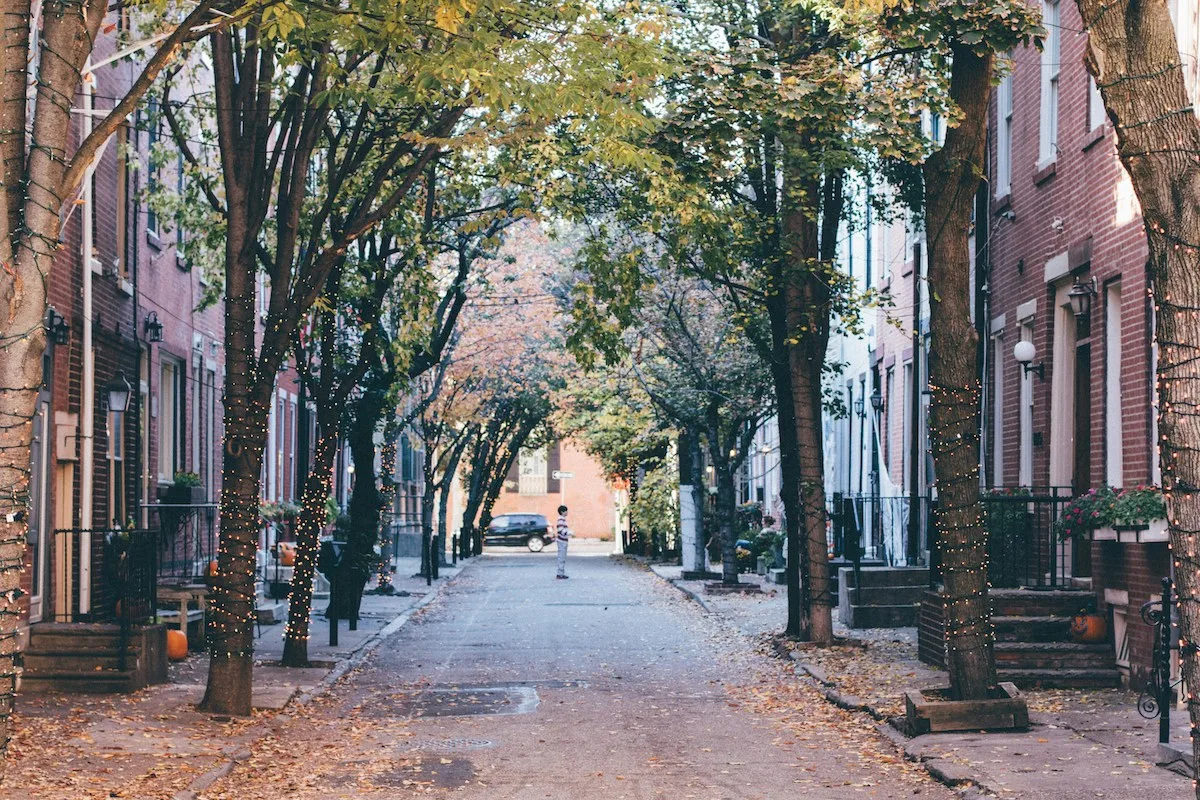
Market stability: Why it matters
Philadelphia’s rental market is exceptionally stable both year over year.
Year-over-year changes:
- 1BR: 0% (flat)
- 2BR: +1.7% (modest $30/month increase)
- National average: -1.04% (1BR), -0.94% (2BR) declining
What this means for renters: While each apartment is different, Philly’s overall market isn’t seeing swings large enough to cause any major increases in rent when you’re looking to renew your lease or find a new home. The market is predictable, which is a unique and significant relief for most renters.
Compare Philadelphia to other cities in our monthly national rent report.
What is Philly’s cost of living, beyond rent?
Philadelphia’s overall cost of living runs approximately 3.2% above the national average, according to PayScale and BestPlaces (indexed at 104.3):
- Groceries: +4.1% above average
- Transportation: +5.3% above average
- Utilities: +5.5% above average
- Healthcare: -3.8% below average ✓
Bottom line: You’re getting the experience of living in a major metropolitan city with world-class museums, a thriving food scene, professional sports (Go Birds), and reliable public transit, but without the financial burden renters often experience in other East Coast areas where studios cost $3,000+ (looking at you, New York).
What salary do you need to afford rent in Philadelphia?
You’d need to make $5,500 per month before taxes, or $66,000 annually, to afford the citywide median rent in Philadelphia (this median price is calculated using all bedroom sizes), according to the traditional 30% rule. The 30% rule recommends renters not spend more than 30% of their gross income on rent. Here’s how that breaks down for Philadelphia.
How much you’d have to make to afford a 1 or 2 bedroom apartment:
- 1 bedroom rent ($1,500): Recommended monthly income: $5,000 → Annual salary of $60,000
- 2 bedroom rent ($1,790): Recommended monthly income: $5,967 → Annual salary of $71,600
Again, these suggestions are based on the 30% rule, which is ultimately a suggestion to help renters budget. With just 30% of income going toward rent, you’d have 70% of your budget dedicated to other goals and expenses.
But if your income falls below these recommendations, like it does for many renters, there are strategies you could consider to help stretch your budget. Renting with roommates or expanding your search area to other neighborhoods can bring costs down.
Philadelphia’s average wages vs rent prices
Philadelphia’s overall median household income is $60,521 (U.S. Census data), about $521 above the 30% rule target for a one-bedroom apartment. But if you’re between 25 and 44 (core renter demographic), this estimation changes favorably.
According to Neilsberg’s research, the median household income for ages 25-44 jumps to $72,032. At that income level:
- 1BR median ($1,500) uses only ~25% of income
- 2BR median ($1,790) uses ~29.8% of income
What different salaries can afford in Philadelphia, based on the 30% rule?
[table “” not found /]
Key insight: A $200 monthly rent difference equals $2,400 annually, enough to max out a Roth IRA contribution or build a solid emergency fund.
Use our rent calculator to determine your personal affordable rent range based on your exact income.
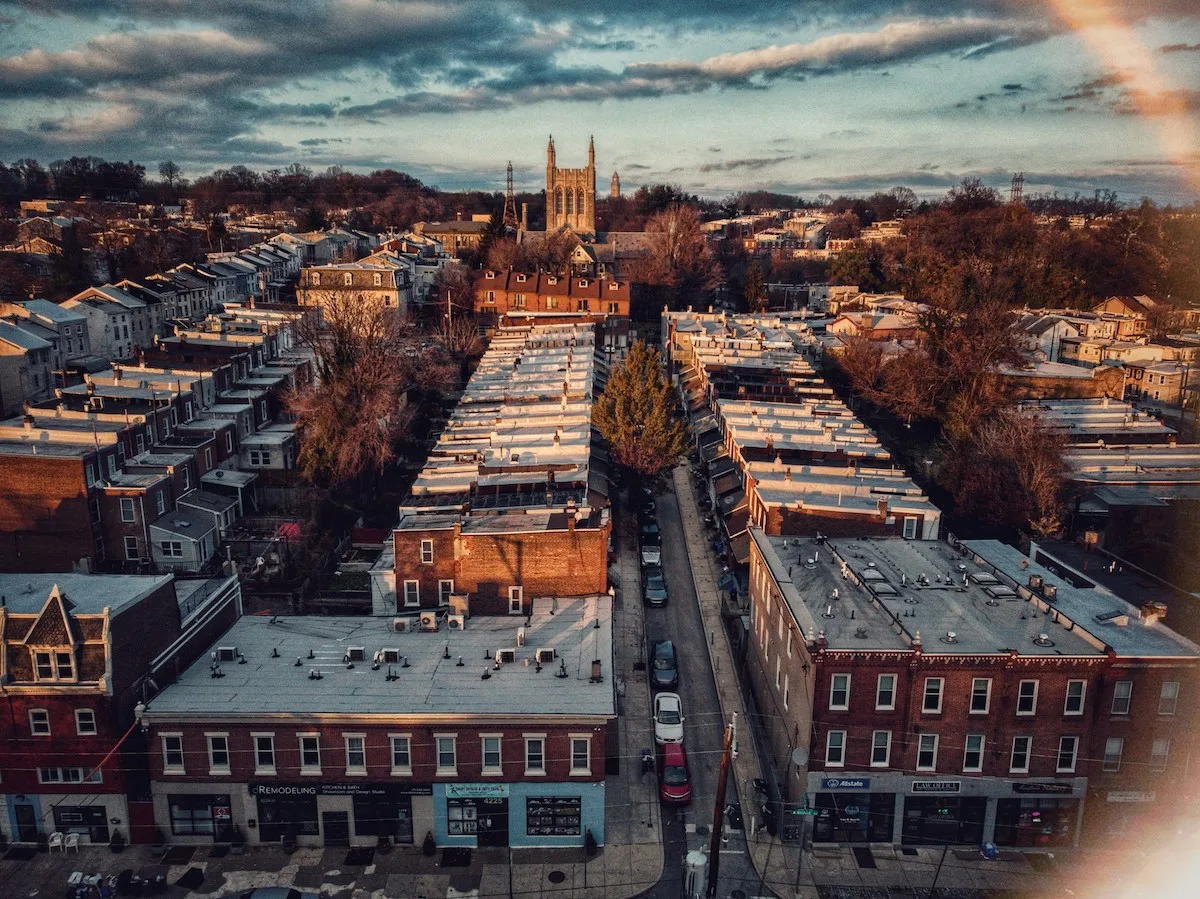
What are the most affordable neighborhoods in Philadelphia for renters?
Dunlap is the cheapest neighborhood in Philadelphia for renters right now. Like Dunlap, specific Philadelphia neighborhoods deliver dramatically better value, up to 28-33% below the citywide median, translating to $5,460-$6,600 in annual savings. That’s real money for debt payoff, emergency funds, or retirement savings.
Dunlap — $1,100/month
Savings vs. citywide median: 33% below ($550/month = $6,600/year saved)
What you get:
- Lowest median rent in the city
- Significantly more square footage per dollar, translating to space for family, a home office, a dining table, or just breathing room.
The tradeoffs:
- Building finishes tend to be functional rather than luxurious.
- Many rentals are older Philly rowhomes without amenity packages (gyms, rooftop decks, concierge).
- Longer trips to Center City or downtown areas.
Best for: Remote workers, budget-focused renters, anyone prioritizing space and savings over walkability.
Frankford — $1,150/month
Savings: 30% below median ($6,000/year saved)
What you get:
- The Market-Frankford Line puts you 25-30 minutes from Center City.
- Significantly more square footage per dollar.
The tradeoffs:
- Building finishes tend to be functional rather than luxurious.
- Many rentals are older Philly rowhomes without amenity packages.
- Longer trips home if your social life centers on Rittenhouse or South Street.
Best for: Remote workers, budget-focused renters, anyone prioritizing space and savings over walkability.
Lawncrest — $1,180/month
Savings: 28% below median ($5,640/year saved)
What you get:
- Residential feel with larger layouts for the price.
- Decent access to parks and neighborhood retail.
- Quiet streets are perfect for separating work from home life.
The tradeoffs:
- Limited walkable nightlife.
- You’ll drive or rideshare to most restaurant destinations.
- Transit requires bus connections.
Best for: Renters prioritizing peace and space, families, or anyone past the “live above the bar” phase.
West Oak Lane — $1,195/month
Savings: 28% below median ($5,460/year saved)
What you get:
- Leafy residential blocks with genuine neighborhood rhythm
- Competitive rents for larger floor plans.
The tradeoffs:
- 40+ minute commutes to Center City during rush hour
- Limited walk-to nightlife.
Best for: Graduate students, remote workers, families wanting a slower pace within city limits.
But affordable apartments exist in various parts of the city, depending on your budget. Add your price range and then sort your search by price descending to see apartments in your price range.
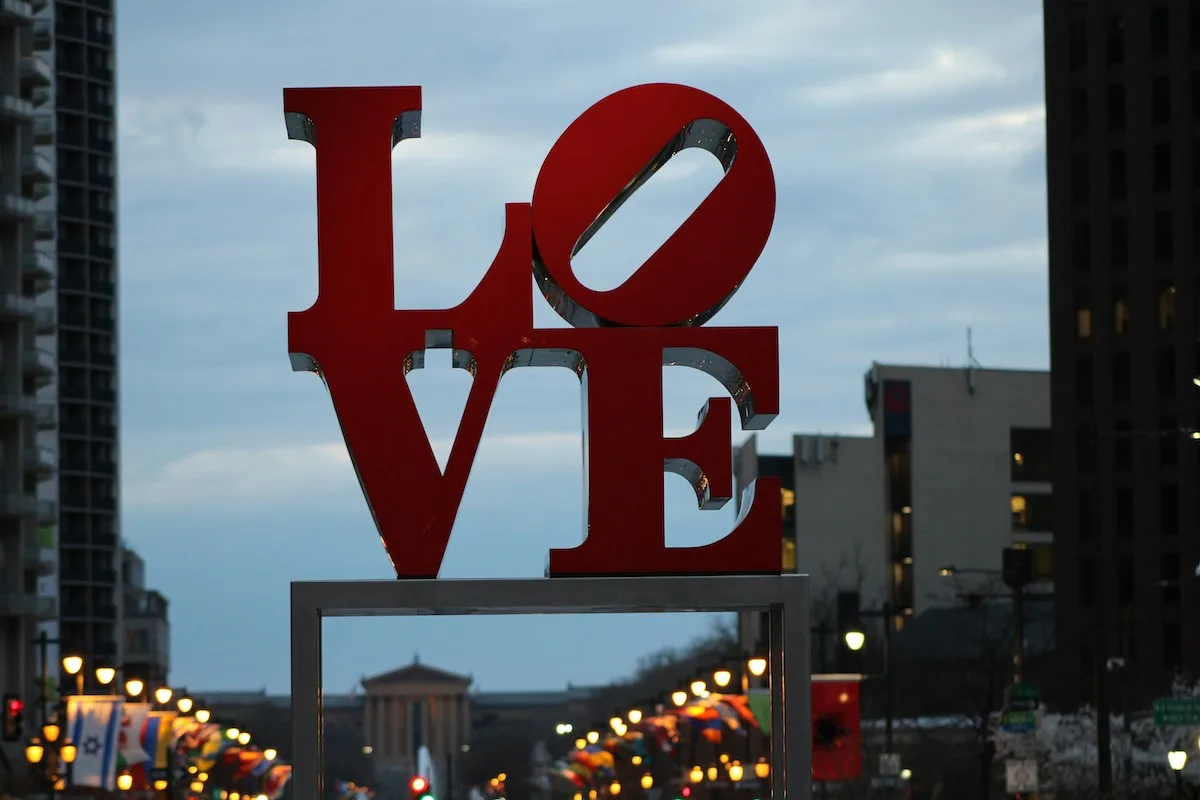
What are the most expensive Philadelphia neighborhoods?
Neighborhoods concentrated near Center City are often the most expensive. Here’s where rent dollars go highest (and what you get in exchange for a premium price):
Avenue of the Arts South — $2,692.50/month
Avenue of the Arts is 63% above the city median, or +$12,510/year in total rent spending, on average. (Keep in mind, though, that these are estimations.)
What you get:
- Doorstep access to the Kimmel Center, theater, museums, and restaurants.
- More buildings with full-service amenities like door attendants, fitness centers, or decks.
- Commutes to Center City employers are measured in blocks, not transit stops.
Who this area is best for: High earners who want to be able to walk to arts attractions, or value downtown’s vibrancy over space.
Logan Square — $2,542.50/month
Logan Square is 54% above the median (roughly +$10,710/year in total rent spending, as compared to the city average).
What you get:
- Short walks to museums, parks, and major employers.
- A mix of historic and modern buildings.
- Easy car-free living with strong transit access.
Who this area is best for: Professionals and renters who value urban living and modern amenities.
Chestnut Hill — $2,356/month
Chestnut Hill is 43% above the median (+$8,472/year).
What you get:
- Smaller-town feel
- Independent shops, art galleries, beautiful architecture, and plenty of green space and gardens
- Quieter pace despite being technically in Philadelphia.
Who this area is best for: High earners and families who don’t mind a long commute if it means living in a charming neighborhood with easy access to parks and character.
Graduate Hospital — $2,175/month
Graduate Hospital is 32% above the median (+$6,300/year).
What you get:
- A walkable neighborhood between Center City and South Philadelphia
- A mix of historic and modern buildings, with single-family homes
- Strong restaurant and cafe scene
Who this area is best for: Families and renters who want access to posh and shopping districts near Rittenhouse Square.
Reality check: To keep rent under 30% of income in these areas, you need $80,000-$100,000+ annually. For someone earning the young professional median of $72,032, these neighborhoods require 36-45% of gross income, which could be a tight squeeze that limits other financial goals.
Run your numbers with our rent calculator to see what and where in Philly is best for your budget.
When is the best time to search for Philadelphia apartments?
If your goal is finding affordable rent in Philadelphia, the best time to search for an apartment is in February. If you want the least competition, look in December.
Philadelphia’s rental market has clear seasonal patterns. When you search can matter just as much as where you search, if you time your move just right.
Lowest rent prices: February
Philly rental prices in February are roughly 2.05% below the yearly average.
- 1BR: Save roughly $31/month ($372/year)
- 2BR: Save roughly $37/month ($444/year)
Why? This is a post-holiday lull, before demand surges in the spring. Landlords may be more eager to fill vacancies. All of this means less competition and sometimes more opportunity to negotiate fees and move-in costs.
Highest rent prices: June
In June, rental prices in Philly jump 2.36% above the yearly average. That’s about +$35-40/month more than median prices.
Why? This is when the usual summer demand overlaps with graduation season—every college grad and family starts relocating, creating higher prices.
Most and least competitive months for rentals in Philly
- December is the least competitive overall, and the best for negotiating terms, fees, or waived application costs
- March is the most competitive. This is when demand spikes for April/May move-ins, but supply hasn’t caught up just yet.
Strategic timing: Start searching 2-3 months before your ideal move-in. Target February for raw price savings. Use December for negotiating power beyond just the monthly rent.
Start your Philadelphia apartment search now.
Can you live in Philly without a car?
Depending on where in the city you live, you can get by without a car, but many Philadelphians have cars, and it is often more convenient if you can afford it.
According to Data USA, the average commute is 32 minutes, with typical households owning around one car. Transportation costs run 5.3% above the national average.
True cost comparison: Car vs no car
With a car:
According to AAA’s 2025 Your Driving Costs analysis, the average cost of owning a new car is $11,577, or approximately $965 per month. However, this national figure includes depreciation on newer vehicles. For Philadelphia renters with older cars, monthly costs typically include:
- Insurance: Varies by age and driving record
- Parking: $115-$500/month depending on neighborhood and amenities (cheapest monthly parking starts at $130 in outer areas)
- Gas and maintenance: Variable based on commute distance
Estimated Philadelphia car ownership range: $500-$800+/month for renters with established vehicles and parking needs
Annual cost: $6,000-$9,600+
Without a car:
SEPTA’s Anywhere Pass (unlimited access to all buses, subways, trolleys, and Regional Rail) costs $255/month as of September 2025. For renters who don’t need Regional Rail access, basic transit options cost less, though SEPTA implemented a 21.5% fare increase in September 2025.
Adding occasional rideshare for trips beyond transit coverage:
- SEPTA monthly pass or pay-per-ride: $100-$255/month
- Rideshare/Uber/Lyft buffer: $50-$100/month
Total car-free range: $150-$355/month
Annual cost: $1,800-$4,260
Annual savings going car-free: $4,000-$5,400+
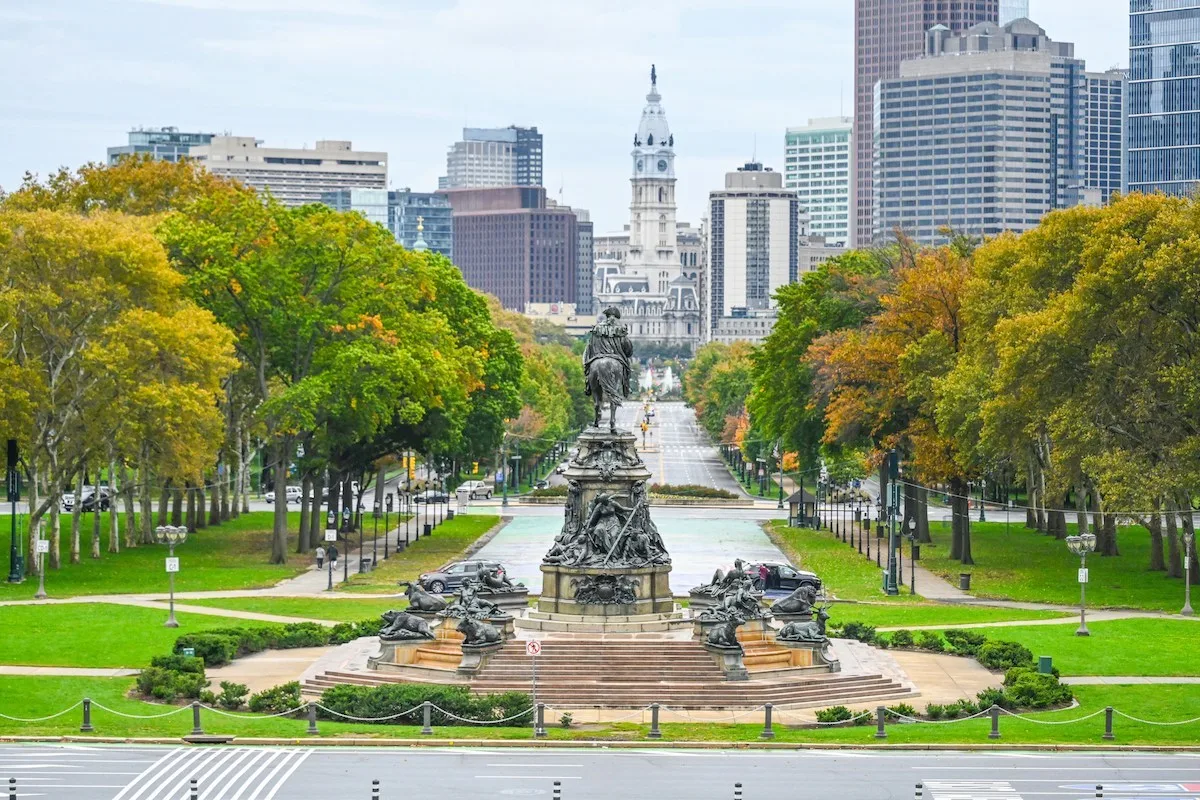
Where in Philly can you live without a car?
Car-free-friendly neighborhoods:
- Avenue of the Arts South
- Logan Square
- Graduate Hospital
- Rittenhouse
- University City
These areas offer walkable groceries, multiple SEPTA lines, and high service density. The catch? These are Philadelphia’s priciest neighborhoods.
Car-helpful neighborhoods:
- Dunlap
- Frankford
- Lawncrest
- West Oak Lane
Lower rent and more space, but transit is less dense and commutes take longer.
The real math: total monthly housing + transportation
Scenario 1: Renting in a premium area without a car
- Rent: $2,692.50 (Avenue of the Arts South)
- Transportation: $255 (SEPTA Anywhere Pass)
- Total: $2,947.50/month
Scenario 2: A car owner renting in an affordable area
- Rent: $1,100 (Dunlap)
- Transportation: $650 (car costs with parking)
- Total: $1,750/month
- Monthly savings: $1,197.50 ($14,370/year)
Scenario 3: Living car-free in an affordable area (the sweet spot)
- Rent: $1,150 (Frankford, near Market-Frankford Line)
- Transportation: $255 (SEPTA Anywhere Pass)
- Total: $1,405/month
- Savings vs. premium car-free: $1,542.50/month ($18,510/year)
Where in Philly do students and young professionals live?
Philadelphia’s university ecosystem is robust. The University of Pennsylvania, Temple, Drexel, LaSalle, and St. Joseph’s are just a handful of the major colleges within the city limits. This means the student population is significant, and demand for apartments will align with graduation and the start of the term.
Popular young professional neighborhoods:
- Cedar Park and University City – West Philly enclaves, where cafes and newer university buildings converge with beautiful rowhomes, cafes, independent shops, and parks.
- Fishtown – A vibrant neighborhood along the Delaware River waterfront known for its thriving arts scene, trendy restaurants, breweries, and live music venues. Industrial-chic lofts mix with renovated rowhomes.
- Manayunk – A hilly neighborhood along the Schuylkill River with a bustling Main Street lined with bars and restaurants, and known for its youthful nightlife scene.
Timing tip: Don’t move in late August with everyone else. If you want to maximize your change of finding affordable rent in Philly, start searching in February for the lowest prices—the difference is $40-50/month ($480-$600/year).
The roommate strategy: Two-bedroom median of $1,790 splits to $895/person. In affordable neighborhoods, find 2BRs for $1,400-$1,500 ($700-$750/person)—manageable on part-time work or entry-level salaries.
Search 2-bedroom Philadelphia apartments for roommate-friendly options.
Frequently asked questions about Philadelphia rent:
How much does it cost to live in Philadelphia per month?
It can cost around $2,800-$3,500/month total for a single person, including rent ($1,500 for 1BR), utilities ($150-200), groceries ($400-500), transportation ($150-600), and other expenses ($400-600).
Is Philadelphia cheaper than New York City?
Yes, significantly. Philadelphia’s median 1BR rent of $1,500 is 30% cheaper than New York City’s median of $2,150, saving you $650/month or $7,800/year. Two-bedroom apartments show similar savings—Philadelphia’s $1,790 median is 29% cheaper than NYC’s $2,520, saving you $730/month or $8,760 annually. The overall cost of living in Philadelphia is approximately 30-40% lower than in NYC.
What is a livable salary in Philadelphia?
Approximately $60,000-$70,000 annually for a single person. Young professionals earning the age-group median of $72,032 can afford most neighborhoods comfortably using the 30% rent rule.
Can you live in Philadelphia without a car?
Yes, especially in Center City neighborhoods. A SEPTA pass costs about $255/month for unlimited access versus $500-800/month for car ownership. Outer neighborhoods require cars or significantly longer commutes.
What neighborhoods should I avoid on a tight budget?
Avenue of the Arts South ($2,692.50), Logan Square ($2,542.50), Chestnut Hill ($2,356), and Graduate Hospital ($2,175) run 32-63% above the citywide median—adding $6,300-$12,510/year to housing costs. Finding affordable rent in Philadelphia is possible if you know where to avoid, and where to look.
Is rent in Philadelphia going up or down?
Remarkably stable. As of October 2025, 1BR rents are flat year-over-year (0% change), while 2BRs increased modestly by 1.7% (~$30/month). It is far more stable than national trends showing declines.
When is the cheapest time to rent in Philadelphia?
The best time to find affordable rent in Philly is in February—February has the lowest prices (~2% below the yearly average). Avoid June (2.4% above average) when graduation moves drive up demand and prices.
How much do utilities cost in Philadelphia?
Approximately $150-250/month for a one-bedroom apartment, including electric, gas, water, and internet. Philadelphia utilities run 5.5% above the national average. Winter heating bills can spike in older buildings.
The Verdict: Philadelphia rent affordability
Philadelphia is affordable, 1-5.5% cheaper than national rent medians, with strategic neighborhood choices offering $5,460-$6,600 in annual savings. Philadelphia offers the genuine possibility of living in a major metro without the same costs as cities like Boston or New York. But “affordable” requires intentionality—doing the math, choosing strategically, timing your search, and understanding total costs beyond rent.
Data Sources: Zumper October 2025 Philadelphia data, Neilsberg income data, Data USA Philadelphia profile, PayScale cost of living, BestPlaces index, ExtraSpace Storage guide



